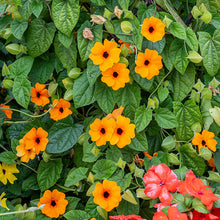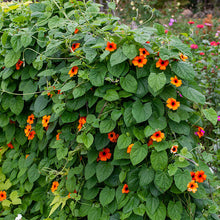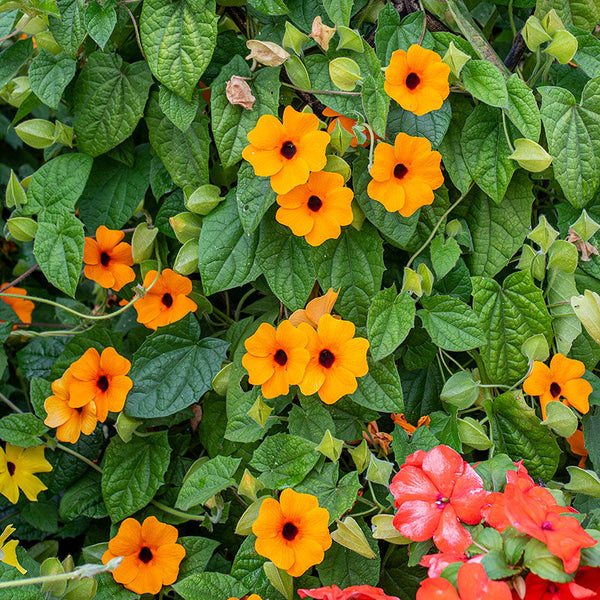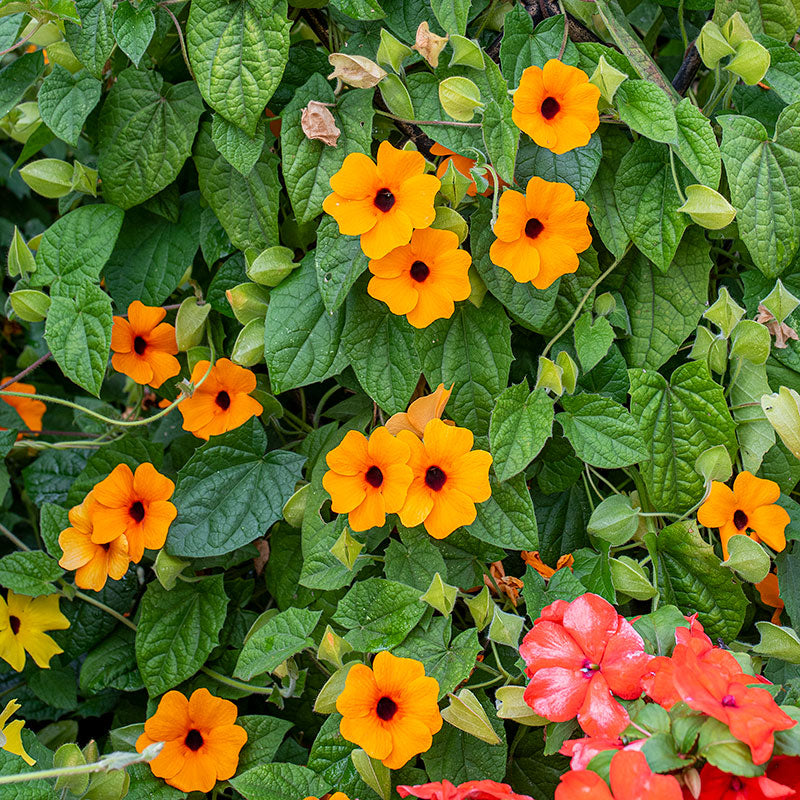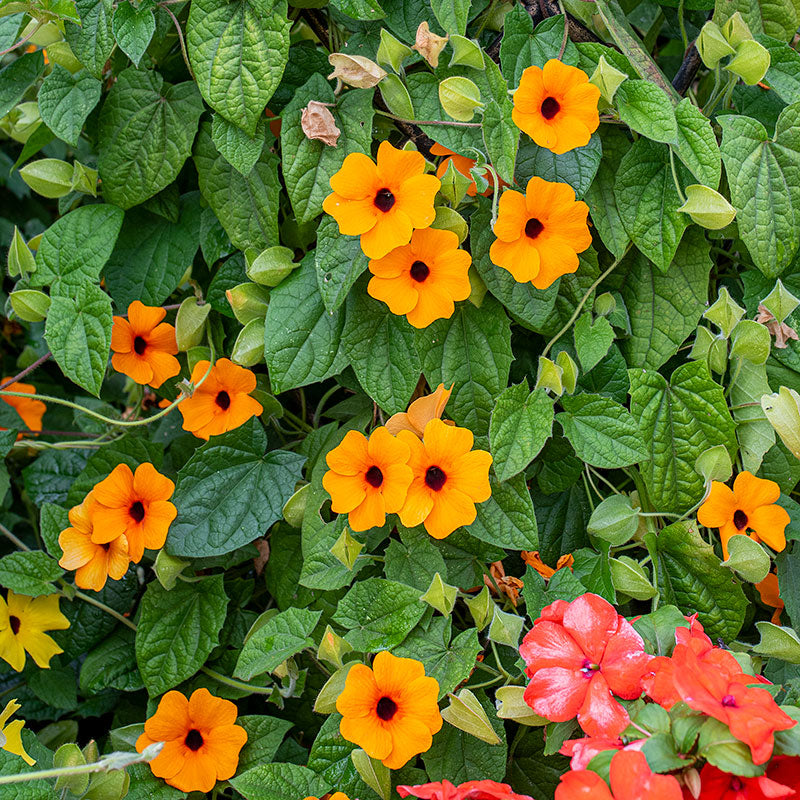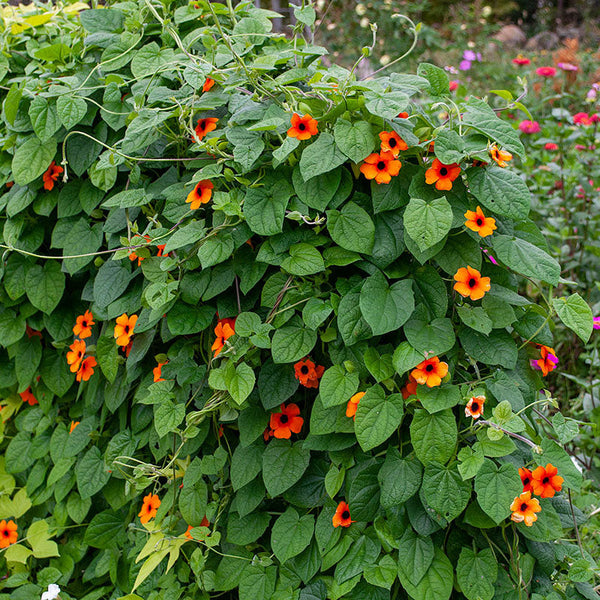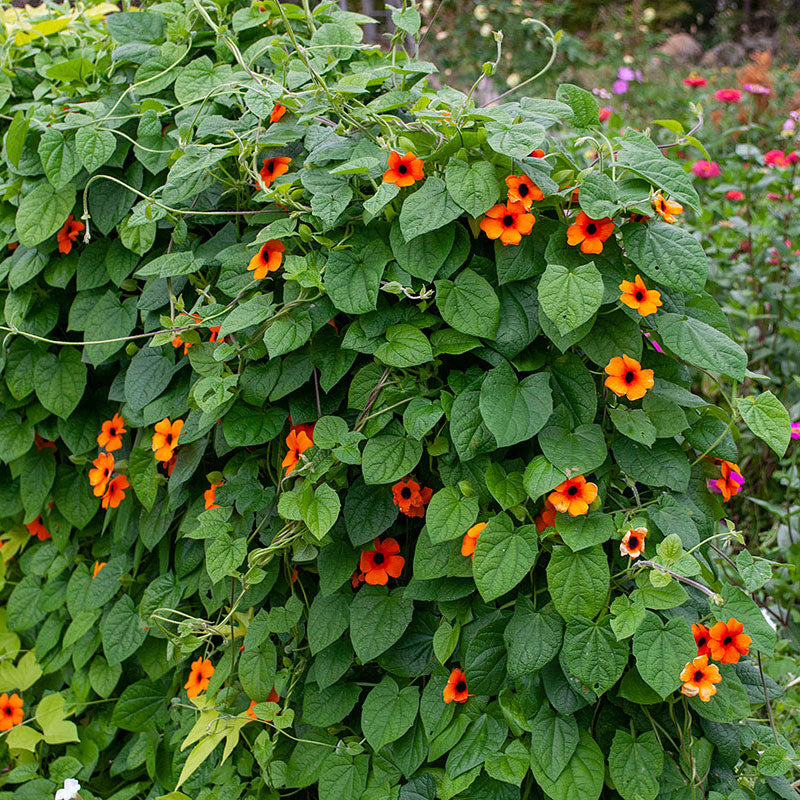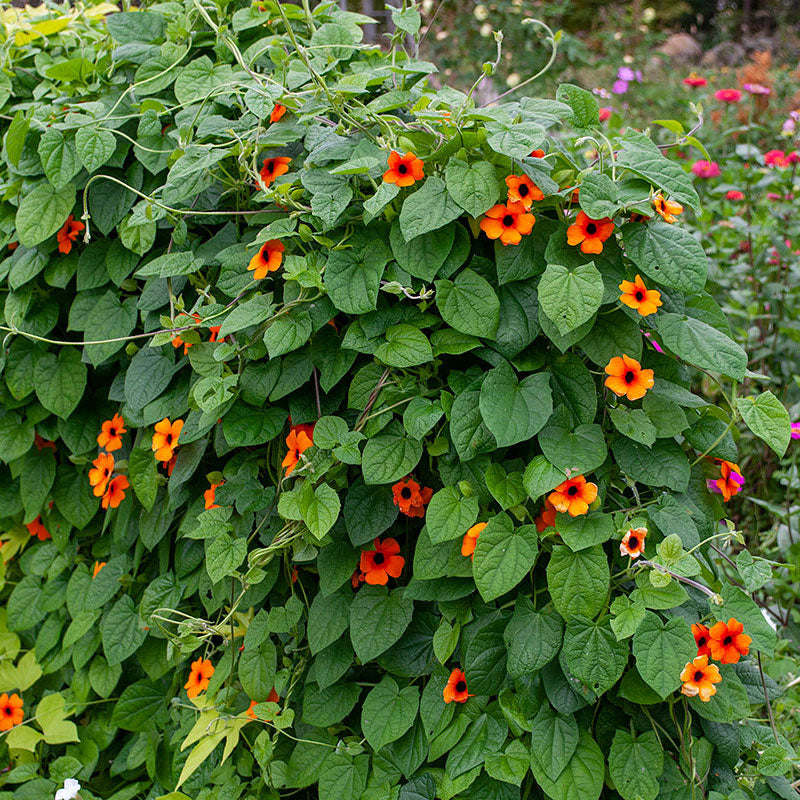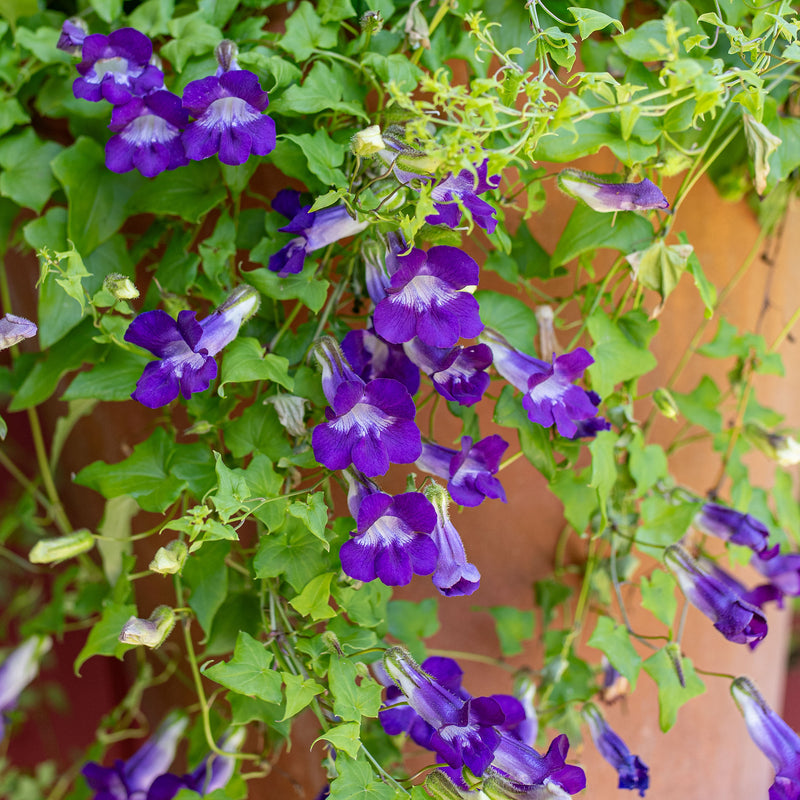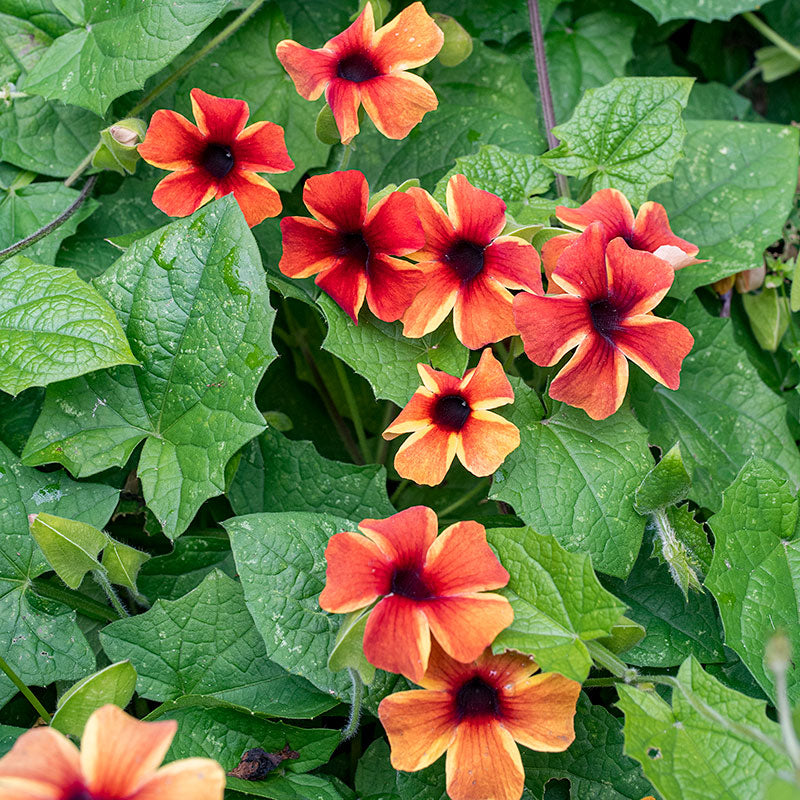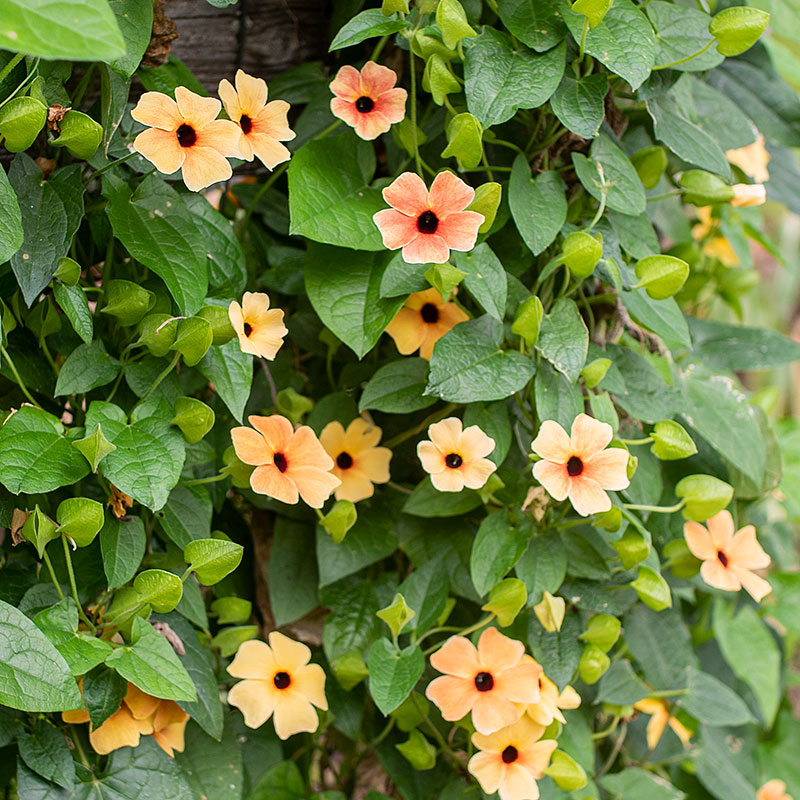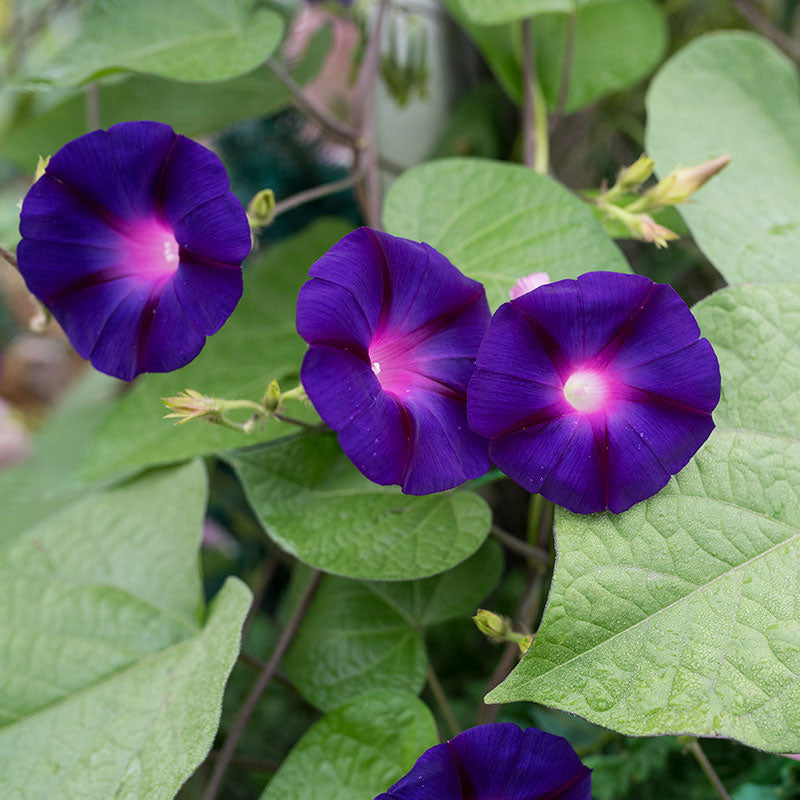Plant
Black-eyed Susan Vine 'Sunny Susy Red Orange'
Thunbergia alata
Riveting orange blossoms with dimpled centers fathoms deep, it seems, bloom in summer and spangle the vigorous twining stems and foliage in glowing abundance. The flowers drop off with no intervention keeping their good looks all season, you need only provide rich, moist soil and a sunny spot.
SKU #P6710
Currently Unavailable
Notify Me When Available
Growing Companions






























